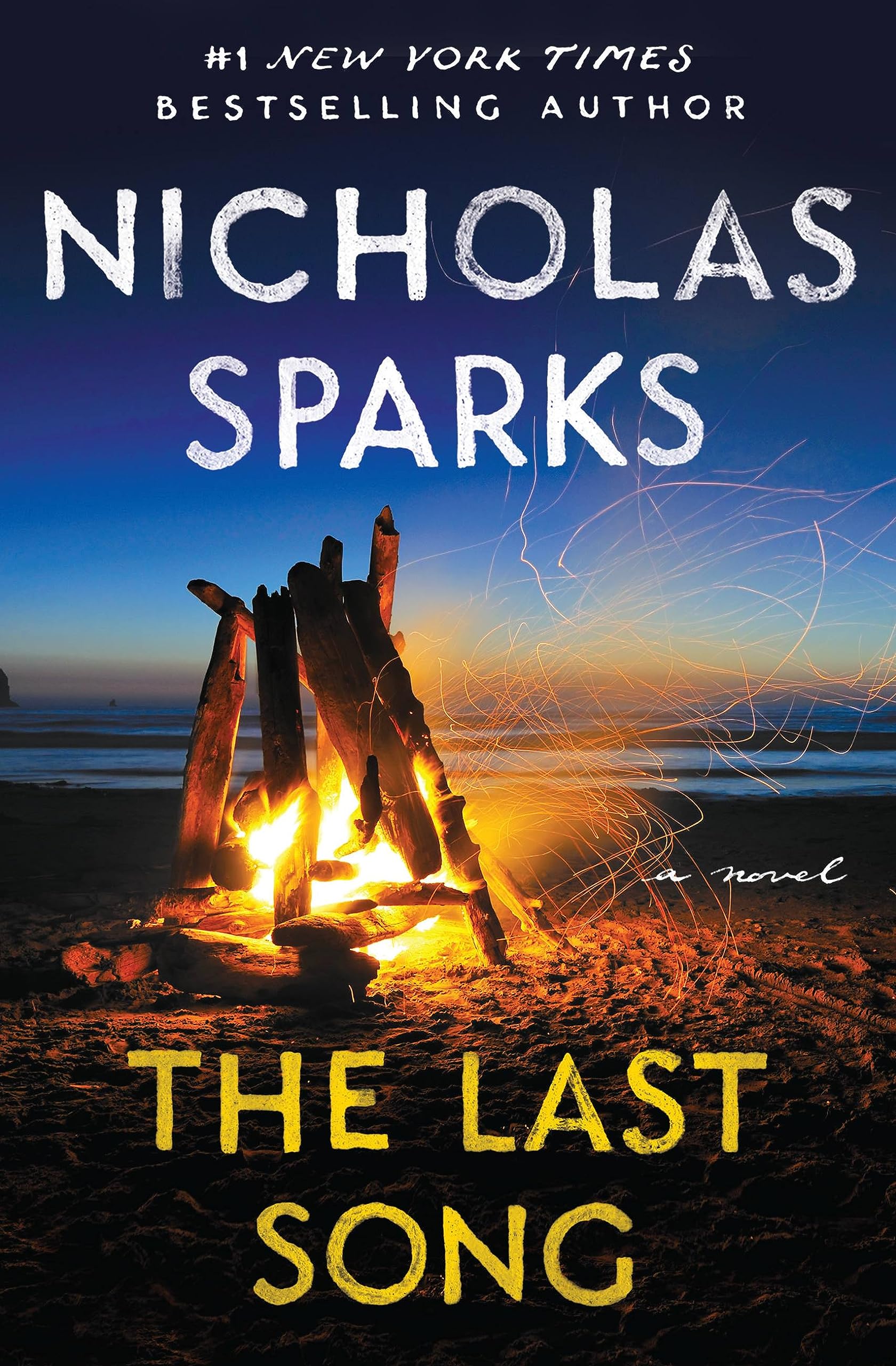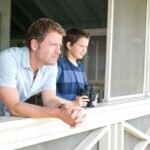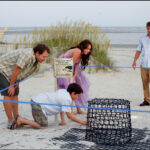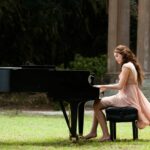Seventeen year-old Veronica “Ronnie” Miller’s life was turned upside-down when her parents divorced and her father moved from New York City to Wilmington, North Carolina. Three years later, she remains angry and alienated from her parents, especially her father… until her mother decides it would be in everyone’s best interest if she spent the summer in Wilmington with him. Ronnie’s father, a former concert pianist and teacher, is living a quiet life in the beach town, immersed in creating a work of art that will become the centerpiece of a local church. The tale that unfolds is an unforgettable story about love in its myriad forms – first love, the love between parents and children – that demonstrates, as only a Nicholas Sparks novel can, the many ways that deeply felt relationships can break our hearts… and heal them.

Seventeen year-old Veronica “Ronnie” Miller’s life was turned upside-down when her parents divorced and her father moved from New York City to Wilmington, North Carolina. Three years later, she remains angry and alienated from her parents, especially her father… until her mother decides it would be in everyone’s best interest if she spent the summer in Wilmington with him. Ronnie’s father, a former concert pianist and teacher, is living a quiet life in the beach town, immersed in creating a work of art that will become the centerpiece of a local church. The tale that unfolds is an unforgettable story about love in its myriad forms – first love, the love between parents and children – that demonstrates, as only a Nicholas Sparks novel can, the many ways that deeply felt relationships can break our hearts… and heal them.
Inspiration
After finishing The Lucky One in June, 2008, my mind immediately began moving to my next possible story. Again, I wanted the story and characters and events in the novel to be original, interesting and universal. Almost always, these are the words that pop into my head in the early stages of conceptualizing a story, but as I’ve continued to write, I’ve found that it becomes more and more difficult to meet those criteria. There are, after all, some “certainties” in my novels: two people will fall in love, the story will be set in eastern North Carolina, and the ending will either be happy, bittersweet or tragic.
How then is it possible to come up with something original? A story that surprises the reader? One that feels fresh and interesting, yet still feels as if it could happen to anyone?
Usually, after those words pop into my head, I move into a process of elimination by asking myself what I’ve done recently. In this instance, I thought back to Dear John (characters were in their early 20s), The Choice (characters were in their late 20s, early 30s and early 40s) andThe Lucky One (characters were in their late 20s). At the same time, the movie for Nights in Rodanthe (with characters in their 40s and 50s) had come out the previous fall. Thus, my first step was to eliminate all those age groups. That left characters older than 60, or younger than 20.
Which then should I choose? Because the somewhat recent film version of The Notebook had been such a success, I was gravitating toward writing another “teen” story, especially since I hadn’t done one since A Walk to Remember. But again, those three words (originality, interesting and universal) popped into my head, and I knew I had to make the novel as different from A Walk to Remember as possible, while still retaining all those wonderful emotional elements.
Ironically, it was exactly at this time that I received a phone call from Jennifer Gipgot, a producer associated with Disney (and the sister of Adam Shankman, who’d directed A Walk to Remember). She said that Miley Cyrus loved A Walk to Remember, that she wanted to do something in the same vein, and then asked whether I “happened to have a story lying around.”
“No,” I said, “but it’s funny you should call about that . . .”
I didn’t commit to the story at that time – my idea for the story hadn’t proceeded far enough by that point – but I began focusing more intently on it, and a couple of weeks later, I had most of the general outline of the story. One element still eluded me – what was it specifically that draws the characters together? – but I spoke to Jason Reed at Disney who reiterated that they were interested in the idea of me writing the screenplay (as well as, obviously, the novel).
Still, for the next three weeks, that one element eluded me. Essentially, it came down to this: I wanted the characters to feel the need (or almost feel forced) to spend time together, even though they didn’t much like each other at first. And whatever this element was, it had to (a) be at the coast of North Carolina, (b) be something that could happen to anyone, and (c) begin in June and end in August.
A couple of (unoriginal and uninteresting) ideas immediately spring to mind: summer camp or a summer job. I had no intentions of doing either (both are unoriginal and hence, uninteresting). What then could it be? A “tournament” of some sort? (unoriginal and uninteresting). And so it went, right down the line. One idea after another just didn’t work the way I wanted.
Until, of course, I stumbled onto the idea of sea turtles. Or rather, a sea turtle nest. And, more specifically, a nest behind her house that she feels the need to guard, and a young man who volunteers at the aquarium, who’s sent out to guard the nest.
Again, it’s one of those seemingly simple ideas, but once I had it, I knew it was exactly what the story needed.
By then, I was getting ready to head to Los Angeles for the media tour for the film, Nights in Rodanthe, and I spent time with both Jason and Jennifer, and the Cyrus family. By then, I’d worked out all the major elements of the story, and I presented it to all of them. Fortunately, they liked the idea, and I agreed to write the screenplay first, since they wanted to start filming in the summer of 2009.
Because the screenplay and novel were going to be similar (at least in my version, prior to director changes), it was less odd than you might think for me to write the screenplay first, but sometimes, when working with Hollywood, that’s the way it goes.
Wilmington, NC
Situated on the southeastern coast of North Carolina, Wilmington is a charming port city near the Cape Fear Coast beach community. Rich in naval history, Wilmington is a modern city with so much to see and do; from a WWII battleship to a Hollywood movie production studio, cobblestone streets with horse-drawn carriages to music festivals, history museums to contemporary art galleries, elegant restaurants to welcoming nightspots, Wilmington has something for everyone. Wilmington’s thriving beach community makes it the perfect location for chance encounters between lovers – young and old – in The Last Song.















